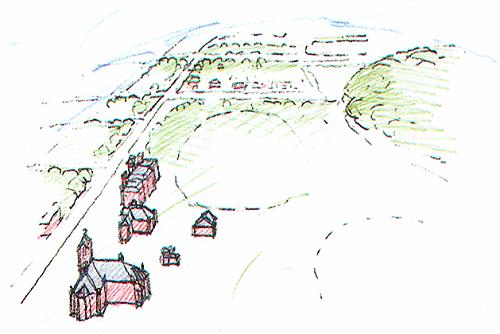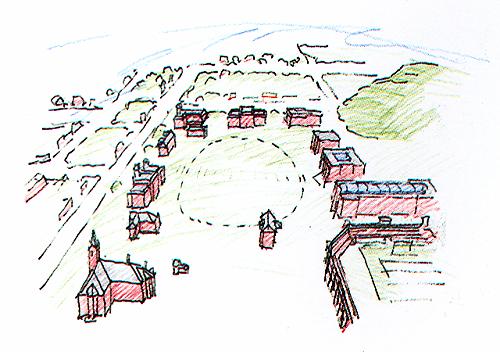Syracuse UniversityCampus Evolution from 1893 to 1994 |
|
|
|
1893 - During its early years the campus is simply a row of buildings fronting on University Place. |
|
|
1918 - With the Old Row along University Place complete, new buildings are sited around the old hayfield to the south, roughly forming the internal campus space that comes to be known as the Old Oval. While these newer buildings face inward toward the Oval, the older buildings/orientation remains toward University Place, facing away from the new campus green. This becomes one of the central dilemmas which a series of subsequent master plans will attempt to remedy |
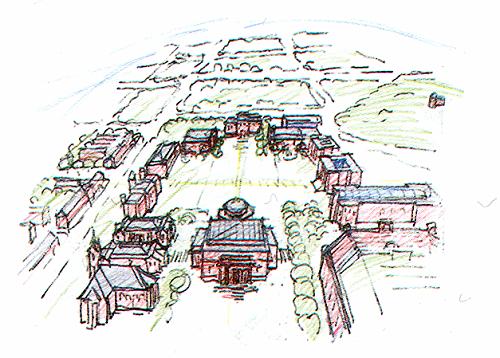 |
1928 - After an earlier, more loosely organized plan by Revels and Hallenbeck, Pope and Baum propose a grandly Beaux Arts campus plan, using a domed chapel to formalize the Old Oval's east-west axis. This plan envisions an ambitious series of new Neo-Georgian buildings, including a major auditorium attached to the chapel's west face. Several cross axes are also proposed extending northward into the street grid of University Hill. The Old Oval becomes the Main Quadrangle. |
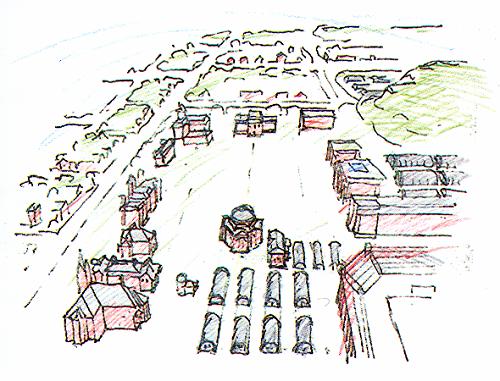 |
1949 - the onset of the Great Depression, followed by World War II, prevents the University from completing the Pope-Baum plan. Hendricks Chapel and Maxwell Hall are the only two Pope and Baum buildings added to the core campus. The resumption of peacetime brings exponential growth and the campus quickly fills with military surplus pre-fabs, in sharp contrast to the early twentieth century's visions of formality and order. |
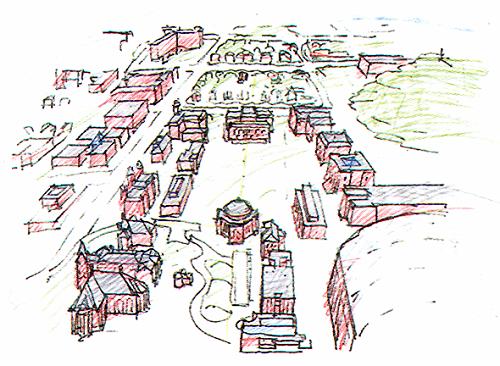 |
1985 - Through the 1950's, 60's and 70's, the University secures its growth with permanent buildings. While replacing the pre-fabs, these buildings fail to re-order campus space, reacting instead to pragmatic influences and the relentless pace of expansion. A series of modest modernist buildings are constructed within the Main Quadrangle as an "inner liner," obscuring the back sides of the original Old Row buildings. |
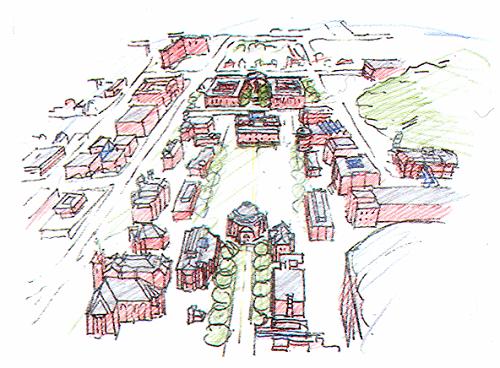 |
1994 - Projects such as the Center for Science and Technology, Eggers Hall, and new structured parking are introduced to remedy the spatial disorganization, forming a new series of organized landscapes. University Place is closed to public motor traffic, converting the old Lawn into a new internal campus green. |
